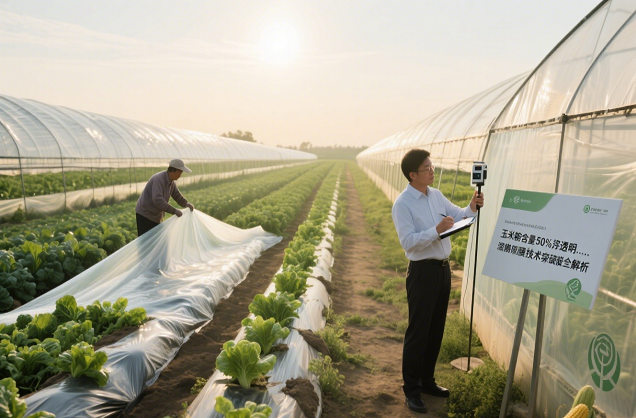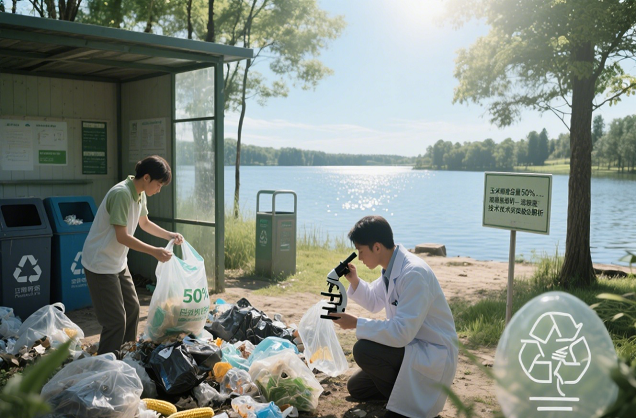Corn starch content of 50% still transparent? Starch-based film technology breakthroughs fully analyzed
In the field of environmentally friendly packaging materials, a major technological breakthrough is rewriting the rules of the industry - the newly developed starch-based film has achieved an astonishing 92% light transmittance, almost comparable to traditional PET plastic film, while maintaining 50% corn starch content. How was this seemingly impossible combination achieved?

I. The core principle of technological breakthrough
1. Nanoscale starch modification technology
The size of traditional starch particles is between 5-100 microns, which will seriously scatter light. The latest technology through:
- Enzymatic-mechanical synergistic treatment: reduce starch particles to 20-50 nanometer size
- Surface graft modification: encapsulation of starch granules with lactic acid oligomers
- Refractive index matching: precise modulation of the optical properties of the material.
2. Multi-layer composite structure design
Adopting innovative ABA three-layer structure:
- Outer layer: high purity PLA to ensure the surface smoothness.
- Middle layer: high content of modified starch.
- Transition layer: molecular level interfacial fusion technology
II. Comparison of key performance indicators
Performance parameters New starch film Traditional starch film PET film
Starch content 50% 20-30% 0
Light transmittance 92% 65-75% 93
Tensile strength(MPa) 45-50 15-25 50-55
Degradation Cycle(Month) 6-12 3-6 400+
Production cost($/kg) 2.8-3.2 1.8-2.2 1.3-1.5

III. Four major application scenarios
1. Food packaging
- Fresh fruits and vegetables transparent packaging
- Instant product visual window
- Highly transparent outer film for bakery products
2. electronic products
- Screen protection film
- Scratch-resistant layer for electronic products
- Flexible display substrate
3. Agriculture
- Highly Transparent Mulch
- Greenhouse covering material
- Specialized film for seedling production
4. Cosmetic Packaging
- Cosmetic transparent packaging
- Detergent visual packaging
- Personal Care Film

IV. Technical Advantages
1. Environmental performance breakthrough
- The proportion of renewable resources in raw materials is 50-55%.
- Carbon footprint is 65% lower than PET
- Completely degraded in 6 months under industrial composting conditions.
2. Optical performance optimization
- Haze value <5% (close to glass)
- Color difference ΔE<1.5 (almost no color shift)
- Adjustable UV transmittance (5-95%)
3. Processing innovation
- Compatible with existing blown film equipment
- Processing temperature window is widened to 160-190℃.
- High speed printing and heat sealing

V. Challenges
1. Technical bottlenecks
- Long-term weatherability needs to be improved
- Performance degradation in high humidity environment
- Ultra-thinning (<15μm) is difficult.
2. Industrialization obstacles
- Insufficient supply of specialized starch raw materials
- High initial production cost
- Recycling system has not been perfected
 Significant progress in PBAT/s
Significant progress in PBAT/s
 PLA/PBAT composite film degrad
PLA/PBAT composite film degrad
 A New Choice for Takeaway Pack
A New Choice for Takeaway Pack
 Significant progress in PBAT+s
Significant progress in PBAT+s
CONTACT
Add: Room 4006, No.1 Helong Yiheng Road, Baiyun District, Guangzhou City
Tel: +8613450255948
Wechat : +86-13450255948
Fax: +86-13450255948
E-mail: 13450255948@163.com








